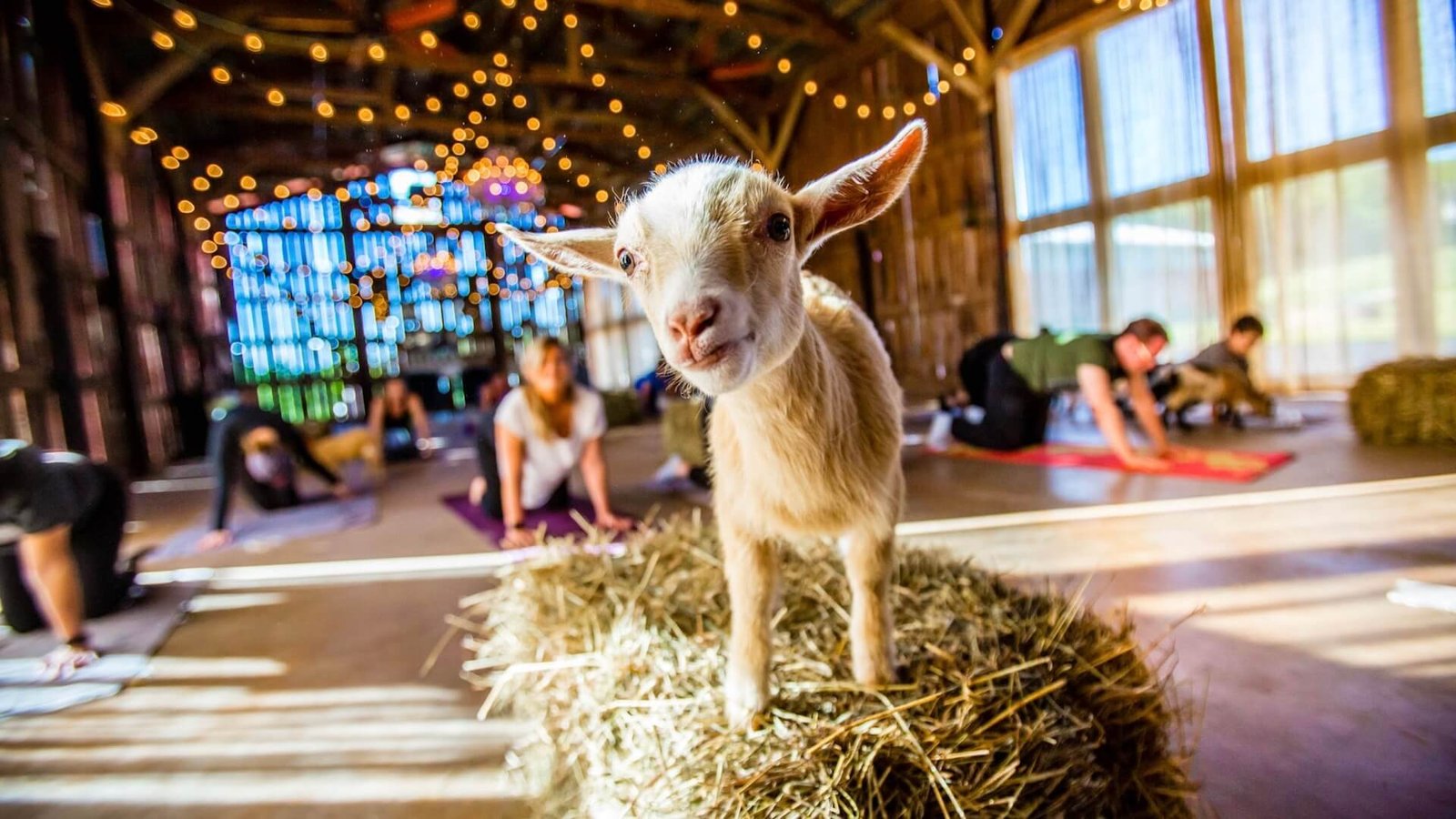
Article at a Glance
- In a very saturated fitness marketplace, these different styles compete and conflict with each other, often leaving new students feeling confused about what to do and with more questions than answers.
- When exercise classes are branded as the best version of yoga available they can limit our experience of yoga to a particular style of exercise and even cause us to believe these exercises are all there is to yoga.
- Ultimately, the best kind of yoga is the one that you do – and in your own style. Read on to Learn more…
- This is a deep-dive article – so grab a cuppa, put your feet up and enjoy!
- Read time for this article is about: 15 minutes
What does Style Mean?
Pick any topic of interest. Movies, Sport, Food, Fashion, Yoga…
We all have preferences in what we like and don’t, what appeals to us and those things to which we are averse.
In day to day language, we use the words style, kind and type – more or less interchangeably and it doesn’t much matter whether we are describing Yoga, Coffee or Clothing.
When we want to make a choice, additional factors such as flavour, preference and favourite start to come into play.
For example: If we are lined up and waiting to choose our morning coffee, we likely have our favourite kind (flavour) in mind – if not as our everyday, habitual choice – then at least as a fallback, for when we are feeling less adventurous.
For the coffee connoisseur this is fine. However, if we have never tasted coffee, the subtleties of previous experience (and a safe and comfortable choice) are not available to us, we may instead feel overwhelmed by too many choices which we can’t easily differentiate.
Modern Yoga and its multitude of options and opinions, can make newcomers feel the same way.
Too much choice with no clear best choice, can lead to confusion and frustration and even cause new students to give up before they really get started.
This is a great shame because yoga really does work – but only when you do it!

Styles of Yoga?
Understanding the ‘what’ and ‘why’ of yoga is far more important than the number of styles.
Yoga is a self-help science, a self-care system and a wisdom tradition expertly integrated into a sensible and cohesive whole. It’s arguably the most sophisticated and complete system of its kind to have ever been put together.
The goal of Yoga includes the physical, mental and spiritual development of the individual. With practices designed to bring about positive changes in our lives and relationships and that help us maintain good health and well-being over a lifetime.
So-called ‘Styles of yoga’ are a new phenomenon that moves us further away from the original intentions of Yoga by focusing almost entirely on how to move the body – rather than presenting the exercise component of yoga as a single part of a multi-part and multi-faceted system.
In a very saturated fitness marketplace, these different styles compete and conflict with each other, often leaving new students feeling confused about what to do and with more questions than answers.
Despite how important exercise is for us, slapping a new-age sounding coat of paint on a group fitness class does not transform it into the practice of yoga – regardless of how authentic it is made to sound or the intentions behind it.
When exercise classes are branded as the best version of yoga available they can limit our experience of yoga to a particular style of exercise and even cause us to believe these exercises are all there is to yoga.
I view this situation as a missed opportunity for everyone involved.
For the student – who may not understand there is more to yoga than keeping fit and who may be searching for something more meaningful, that they have heard about and sense is there, but can’t quite put their finger on.
For the teacher – it can reduce the effectiveness of individual practices and the opportunity to make a more significant, longer-term impact on the lives of their students.
I believe people need and deserve clear guidance to help them find that ‘thing’, (essence, mojo, purpose), that feel-good exercise hints at, but cannot satisfactorily provide on its own.
The very ‘thing’ that the system of yoga was designed to provide and can only be fully realised, when yoga is adapted to suit the individual.
This principle and approach to the application of yoga, is known as viniyoga and forms a foundational part of how I teach.
To Learn More about Viniyoga

Choices, Choices, Everywhere!
Flow Yoga, Yin Yoga, Restorative Yoga, Hot Yoga, ‘XYZ’ Yoga, Beer Yoga, Goat Yoga.
While the Beer Yoga river may have run its course, Goat Yoga is still a thing in 2022. Last time I checked there was even an exciting new variation of it that included Pigs! Yep. You heard that right.
No. I’m not sharing any links here – you’ll need to do your own research on this heady new discipline.
Speaking of Goat Yoga, I was quite surprised to have recently received an email, from an internationally recognised peak yoga body (of all places), featuring a lovely collage of yoga pictures that included someone practising yoga with a goat on their back.
I kid you not! (Sorry) It just seems like everyone and their dog (or cat) is getting in on the act and I guess if the cool kids like it, it can’t be all bad. Personally, though, I’ve seen more than enough for one day.
Oh, who am I kidding? As a yoga teacher, I have first hand experience of all sorts of … unusual… concepts. I am open to trying just about anything and am just poking a little fun at what I know, many people are thoroughly enjoying.
Goats have plenty of energy and if doing yoga with them sounds like fun and helps get you moving your body – power to you! Enjoy it while it lasts. My bets on Pig Yoga though.
Novelty has its place and is something I can appreciate. It can be the hook that motivates us to get up off the couch and move our bodies, rather than spend another hour channel surfing for something fun we haven’t seen before.
Though I do question if having to offer up increasingly more …. unusual … experiences is the best way to attract new students to yoga over the longer term.
Yoga practice can certainly be fun and enjoyable. You’re much more likely to do it – and keep doing it – if you enjoy the experience. I’m all for having a good time and I think this is a significant driver of the ‘yoga as a fun, entertaining (and competitive) sport’ model that we see on offer today.
To Learn More about the Influence of Sport on the Practice of Yoga
Is Yoga a Competitive Sport? – Viewing Modern Yoga through the Lens of Competition
There is a distinct difference between doing something just for fun and having fun while doing something with purpose behind it.One will bring short-term enjoyment. The other can bring about significant change.
Platypus Yoga might get new students to turn up at the studio, (you heard that here first folks!), but it won’t keep them coming back for the Yoga. (Editor’s note: What about when the babies hatch?).
My point is this. Do no confuse new and novel ‘Styles’ of Yoga with Yoga itself – no matter how much fun you have with the latest version doing the rounds.
It may, in fact, be more useful to say ‘flavours’ of yoga, rather than ‘styles’.
Every teacher has a ‘style’ and every student has a preferred ‘flavour’. Yoga is always Yoga.
Most ‘types’ of yoga or ‘styles’ of yoga are really just variations of the physical asana practices (postures or shapes) that are used in Hatha (body focused) yoga.

Choosing What’s Best for You
We live in a world of Questions seeking Answers
- What is the best Food?
- Who is the best Teacher?
- What is the fastest Car?
You get the picture. For a little more confusion, add into the mix the ‘This vs That’ situation.
Modern vs Traditional (Yoga is certainly included here), Cats vs Dogs…. and so on.
In many cases we are trying to compare Apples with Oranges and the questions themselves don’t make a whole lot of sense. Nonetheless, we just can’t seem to help ourselves.
It’s problematic because the more choices we have, the more likely we end up feeling unsure about what to choose.
Even when we commit to a choice, we sometimes still feel ‘buyers remorse’ about all the things we didn’t choose!
This is sometimes referred to as the ‘Paradox of Choice’.
To be fair, there is nothing surprising or strange about any of this. It’s Psychology 101 and basic Human Nature playing out.
From the very beggining, we began to give things names and sort them into categories as a way to make the world around us easier to handle. This long and slow process was the basis of how human language got started.
Converting our thoughts into words. Engaging in conversation and debate. Negotiating and bringing nuance to our arguments.
It’s been an incredible journey and despite our slow and steady evolution forwards, we still, for the most part, function using a rather basic and outdated operating system.
Yoga offers us a practical way to upgrade our internal operating software (mind) while maintaning our hardware (body).
OK. But What does all this have to do with Styles of Yoga?
I believe the process of getting good (useful) information about any topic, starts with questions that need answering – paired with a willingness to learn.
One of my goals as a teacher is to challenge your perception (and preconception of yoga) as well as encourage you to consider how yoga might improve your health and well-being beyond the benefits of exercise.
You likely have more questions than answers now and, I hope, a desire to learn more.
How many Styles of Yoga are There?
More than I can possibly count and likely more than most of us will ever have time for. To be frank though, it’s not really the correct question – and the answer, however interesting, lacks a practical application.
The same can also be said for the virtually unlimited number of postures in yoga (called asana). There are as many as we can dream up and again, without a specific purpose or goal in mind, it’s really just academic.
OK. So Which Style is the Best?
The Best Style of Yoga is your Own Style!
Really? Thats it? The Special Sauce?
Yes. That’s right! The best ‘Style’ of Yoga is your ‘Own’ Style.
Essentially a ‘Personal yoga practice’ that meets your unique and specific needs and that you engage with on a regular basis. Daily if possible.
It’s also the best ‘Kind’ of yoga because it is the yoga that you do regularly and develop over time. Or as I like to say:
Yoga Works Best When You Do it!
Yoga Works Best When You Do it!
To Learn More about Personal Practice
Ready to get started right away? Then please try one of my practice videos and see how you feel afterwards. After all, it’s often better to simply try something out and let experience inform your original questions about it.
Free publicly available Yoga Practices can be found on the Yoga with Len YouTube channel.
Yoga with Len Subscription Members can access on Demand Yoga Practices, Challenges, Courses and More here:
Yoga with Len Video Archive
If you are wanting to practice with me Personally in a group Class – Click Here.
Or 1 to 1 in a Private Class – Get in Touch here.
To Learn More about the Influence of Sport on the Practice of Yoga
Is Yoga a Competitive Sport? – Viewing Modern Yoga through the Lens of Competition

The Goal of Practice and How to Get There
When designing yoga practices, teachers think about the effects it will have on their students. In particular, the energetic effects.
For example: are we aiming to increase heat and energy or cool, calm and relax? Will the practice take place in the morning before work or at the end of the day before rest?
When preparing a group class we must be general in our approach and choices. We expect to encounter a broad range of students, with different abilities and limitations and wish to appeal to the expectations of the average student. It’s why you often hear teachers asking at the start of a class if anyone has had a recent injury or illness. You might be surprised to hear just how often students roll up to class when they really ought to be resting at home.
Group classes are a very recent phenomenom. Traditionally, yoga is always taught one to one.
Although group yoga classes have many positive benefits, they also have certain limitations. Not being able to adequately address the needs of each individual being the most obvious.
When working individually with a student we are able to be highly specific in our approach. Our recommendations come at the end of a collaborative process that begins with a conversation.
The yoga practice best suited to you, will depend on many factors. What you are personally aiming to address – being the primary one.
Other considerations will include your age, stage of life and general health. Do you suffer from any acute or chronic illnesses?
How much experience of yoga do you presently have? When and how often do you intend to practice?
Such questions are appropriate when it’s a back and forward conversation between two people. Not so useful when the conversation is between you and yourself – and going around in circles, in your head, in the middle of the night.
My suggestion is to seek out a well trained teacher (ideally one with experience working individually with a wide range of students) and have a conversation with them about Yoga, to kick-start this process.
I’m passionate about introducing beginners to the practice of yoga and taking some of the stress out of getting started and up to speed.
If you’d like to begin this conversation with me, please get in touch Contact Len
Not Enough Time to Practice Effectively?
Yoga practice doesn’t need to be an hour long to be effective.
A five minute practice that you do every day (for your own reasons) is much more effective than an hour practice (with nothing particular in mind) done every other week.
Learn More about Short Practices
Final Thoughts
Keep in mind that yoga practices are essentially all mini experiments – with the results of each practice determining what follows.
This approach may make perfect sense to you or could feel a little fuzzy. This process and understanding will take a little while to develop, as you need to tune into your body and begin to learn what it really needs.
Over time, the sometimes subtle differences in how you feel, engaging in different practices, will become clearer and more obvious. You’ll take on a more active role in choosing what to do and when to do it – both with more confidence.
This discretion (called viveka in sanskrit) reveals itself gradually as you interact with the system of yoga and is something a good teacher will guide you gently towards. By following this path, you will become your own teacher.









